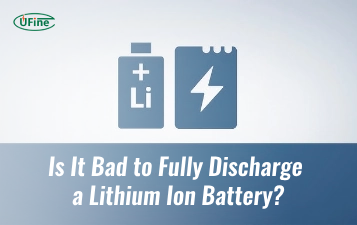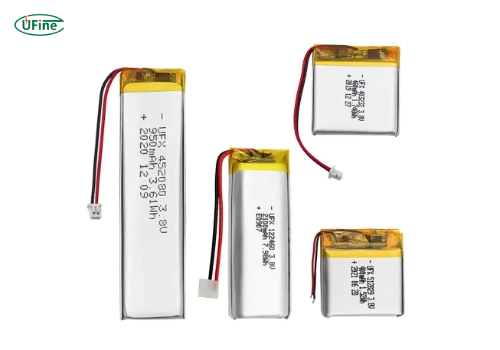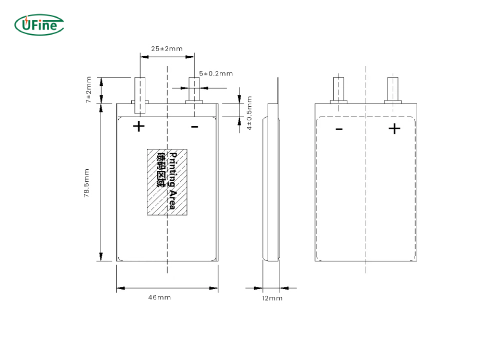
- Part 1. What is a 3.8 V high-voltage battery?
- Part 2. The technology behind 3.8 V high voltage batteries
- Part 3. Advantages of 3.8 V high voltage batteries
- Part 4. Applications of 3.8 V high voltage batteries
- Part 5. Charging and safety considerations for 3.8 V batteries
- Part 6. Comparing 3.8 V batteries to other lithium-ion variants
- Part 7. FAQs
In today’s rapidly evolving world of portable electronics and electric vehicles, battery technology is crucial in powering our devices and transportation. Among the various advancements in this field, the 3.8 V high-voltage battery has emerged as a game-changer, offering improved performance and efficiency. This comprehensive guide will delve into the intricacies of 3.8 V high-voltage batteries, exploring their benefits, applications, and impact on various industries.
Part 1. What is a 3.8 V high-voltage battery?
A 3.8 V high-voltage lithium-ion battery operates at a higher nominal voltage than standard lithium-ion batteries. While conventional lithium-ion batteries typically have a nominal voltage of 3.6 V or 3.7 V, these high-voltage variants push the boundaries by operating at 3.8 V.
The critical difference lies in the battery’s chemistry and construction, which allows it to maintain a higher voltage throughout its discharge cycle. This higher voltage has several advantages, including increased energy density and improved application performance.
Key features of 3.8 V high voltage batteries include:
- A higher nominal voltage of 3.8 V
- Increased energy density
- Improved performance in high-drain devices
- Longer runtime compared to standard lithium-ion batteries
- Compatibility with specific charging systems
Artikel Terkait: What is a LiHv battery?
Part 2. The technology behind 3.8 V high voltage batteries
The development of 3.8 V high voltage batteries represents a significant advancement in lithium-ion battery technology. Manufacturers have made several key innovations in battery chemistry and construction to achieve this higher voltage.
Electrode materials
One of the primary factors contributing to the higher voltage is the use of advanced electrode materials. The cathode, in particular, plays a crucial role in determining the battery’s voltage. Manufacturers often use specialized lithium-rich cathode materials or high-nickel content cathodes to achieve the 3.8 V nominal voltage.
Electrolyte formulation
The electrolyte, which facilitates the movement of ions between the cathode and anode, is also carefully formulated to withstand the higher voltage. Advanced electrolyte additives and solvents improve the battery’s stability and performance at elevated voltages.
Separator technology
High-quality separators are essential in 3.8 V batteries to prevent internal short circuits and ensure safe operation at higher voltages. Manufacturers often use ceramic-coated or multi-layer separators to enhance the battery’s safety and performance.
Precision manufacturing
Achieving consistent performance at 3.8 V requires precise manufacturing techniques. We implement quality control measures to ensure uniform electrode coating, proper electrolyte distribution, and overall battery construction.
Part 3. Advantages of 3.8 V high voltage batteries
Adopting 3.8 V high-voltage batteries offers several significant advantages over traditional lithium-ion batteries. These benefits have made them increasingly popular in various applications, from consumer electronics to electric vehicles.
Higher energy density
One of the most notable advantages of 3.8 V batteries is their increased energy density. Operating at a higher voltage allows these batteries to store more energy in the same physical space as their 3.7 V counterparts. This translates to longer device runtimes or increased range for electric vehicles without increasing battery size or weight.
Improved performance
The higher voltage of 3.8 V batteries allows for better performance, especially in high-drain applications. Devices powered by these batteries can maintain their performance levels for extended periods, resulting in a more consistent user experience.
Weight and space savings
Due to their higher energy density, 3.8 V batteries can provide the same power as more significant, lower-voltage batteries while occupying less space and weighing less. This is particularly beneficial in smartphones or portable electronics applications, where size and weight are critical factors.
Enhanced efficiency
3.8 V batteries often exhibit lower internal resistance compared to standard lithium-ion batteries. This improves overall efficiency, as the system loses less energy as heat during charging and discharging cycles.
Longer lifespan
When properly managed, 3.8 V high-voltage batteries can offer a longer lifespan than traditional lithium-ion batteries. This is due to the advanced materials and construction techniques used in their manufacture, which can help mitigate degradation over time.
Part 4. Applications of 3.8 V high voltage batteries
The unique characteristics of 3.8 V high voltage batteries have led to their adoption in a wide range of applications across various industries. Their high energy density, improved performance, and compact size make them ideal for devices and systems that demand high power in a small package.
Smartphones and tablets
Many high-end smartphones and tablets now utilize 3.8 V batteries to provide longer battery life without increasing device size. The higher energy density allows manufacturers to pack more power into sleek, thin designs.
Electric vehicles (EVs)
While most electric vehicles use battery packs composed of multiple cells, some manufacturers are exploring using 3.8 V cells to increase the overall energy density of their battery systems. This could lead to EVs with longer ranges or reduced battery weight.
Portable electronics
Devices like laptops, digital cameras, and portable gaming systems can benefit from the increased energy density of 3.8 V batteries, offering longer usage times between charges.
Drones and uncrewed aerial vehicles (UAVs)
The lightweight nature and high energy density of 3.8 V batteries make them excellent choices for drones and UAVs, where every gram of weight matters regarding flight time and performance.
Medical devices
3.8 V batteries offer a compact size and long runtime for portable medical devices, such as wearable health monitors or diagnostic equipment.
Power tools
High-performance power tools can leverage the improved energy density and discharge capabilities of 3.8 V batteries to deliver more power and longer runtime in a compact package.
Energy storage systems
Large-scale energy storage systems for renewable energy applications can benefit from the higher energy density of 3.8 V batteries, which allows for more efficient power storage and distribution.
As battery technology continues to evolve, we can expect to see 3.8 V high-voltage batteries found in even more applications, driving innovation across various industries.
Part 5. Charging and safety considerations for 3.8 V batteries
While 3.8 V high-voltage batteries offer numerous advantages, they also require special attention to charging and safety.
Specialized charging systems
3.8 V batteries require charging systems specifically designed to handle their higher voltage. These chargers typically have a maximum charging voltage of 4.35 V, compared to the 4.2 V used for standard lithium-ion batteries. An incompatible charger can lead to undercharging, reducing the battery’s capacity, or overcharging, which can be dangerous.
Precise voltage control
Accurate voltage control during charging is critical for 3.8 V batteries. Overcharging can lead to accelerated degradation or safety issues, even by a small margin. Therefore, charging systems must maintain tight voltage tolerances throughout the charging process.
Temperature management
Like all lithium-ion batteries, 3.8 V variants are sensitive to temperature extremes. Charging and discharging should occur within the manufacturer’s recommended temperature range, typically between 0°C and 45°C (32°F to 113°F). Operating outside this range can impact performance and safety.
Protection circuits
High-quality 3.8 V batteries often incorporate advanced protection circuits to prevent overcharging, over-discharging, and short circuits. These safety features are crucial in maintaining the battery’s integrity and avoiding potential hazards.
Proper handling and storage
Users should handle 3.8 V batteries carefully, avoiding physical damage or exposure to extreme temperatures. Keeping these batteries at a partial charge (around 40-60%) is recommended to minimize degradation when storing these batteries for extended periods.
Regular maintenance and inspection
For applications using 3.8 V batteries, regular maintenance and inspection routines should be implemented. This includes checking for any signs of swelling, leakage, or unusual behavior and replacing batteries that show signs of degradation.
Education and training
Users and technicians working with 3.8 V high voltage batteries should receive proper education and training on their unique characteristics, charging requirements, and safety protocols.
By adhering to these charging and safety considerations, users can maximize the benefits of 3.8 V high-voltage batteries while minimizing potential risks. As with any advanced technology, responsible use and proper management are crucial to realizing the full potential of these innovative energy storage solutions.
Part 6. Comparing 3.8 V batteries to other lithium-ion variants
It’s helpful to compare 3.8 V high-voltage batteries to other common lithium-ion battery variants to appreciate their advantages and potential drawbacks fully.
3.8 V vs. 3.7 V lithium-ion batteries
The most direct comparison is between 3.8 V and standard 3.7 V lithium-ion batteries:
- Energy density: 3.8 V batteries typically offer 20-30% higher energy density than 3.7 V variants.
- Charging voltage: 3.8 V batteries require a higher charging voltage (4.35 V) than 3.7 V batteries (4.2 V).
- Discharge curve: 3.8 V batteries maintain a higher voltage throughout the discharge cycle, potentially improving device performance.
- Lifespan: When adequately managed, 3.8 V batteries offer comparable or slightly better cycle life than 3.7 V batteries.
- Cost: 3.8 V batteries are often more expensive due to their advanced materials and manufacturing processes.
3.8 V vs. LiFePO4 (Lithium Iron Phosphate) batteries
LiFePO4 batteries are known for their safety and long cycle life:
- Nominal voltage: LiFePO4 batteries have a lower nominal voltage (3.2 V) than 3.8 V lithium-ion batteries.
- Energy density: 3.8 V batteries offer significantly higher energy density than LiFePO4 batteries.
- Safety: LiFePO4 batteries are generally considered safer and more stable, especially in extreme conditions.
- Cycle life: LiFePO4 batteries typically offer a longer cycle life than 3.8 V lithium-ion batteries.
- Temperature performance: LiFePO4 batteries often perform better in extreme temperatures.
3.8 V vs. NMC (Nickel Manganese Cobalt) batteries
Electric vehicles and power tools commonly use NMC batteries:
- Energy density: 3.8 V batteries can offer slightly higher energy density than some NMC variants.
- Power output: NMC batteries often provide higher power output, making them suitable for high-drain applications.
- Cost: 3.8 V batteries are generally more expensive than standard NMC batteries.
- Raw materials: NMC batteries rely on cobalt, which has supply chain and ethical concerns, while 3.8 V batteries may use alternative materials.
Part 7. FAQs
-
What is the ideal storage voltage for 3.8 V high-voltage batteries?
For long-term storage, 3.8 V high-voltage batteries should be kept at around 40-60% of their full charge. This typically corresponds to a 3.7-3.8 V voltage per cell. Storing the batteries at this intermediate charge level helps minimize degradation and extend their overall lifespan. -
How often should 3.8 V high voltage batteries be recharged during storage?
To maintain battery health during extended storage periods, users should recharge 3.8 V high-voltage batteries every 3-6 months. This helps prevent deep discharge and keeps the battery’s internal chemistry. Always use a charger specifically designed for 3.8 V batteries when recharging. -
Are 3.8 V high-voltage batteries compatible with standard lithium-ion chargers?
No, 3.8 V high voltage batteries require specialized chargers to handle their higher voltage. Standard lithium-ion chargers typically have a maximum charging voltage of 4.2 V, which is insufficient for 3.8 V batteries that require a charging voltage of around 4.35 V. Using an incompatible charger can lead to undercharging or potential safety hazards. -
How do temperature extremes affect 3.8 V high-voltage batteries?
Like all lithium-ion batteries, 3.8 V high voltage variants are sensitive to temperature extremes. High temperatures can accelerate chemical reactions within the battery, leading to faster degradation and potential safety issues. Low temperatures can reduce the battery’s ability to deliver power and may impact charging efficiency. It’s best to use and store these batteries within the manufacturer’s recommended temperature range, typically between 0°C and 45°C (32°F to 113°F).
Related Tags:
More Articles

Is It Bad to Fully Discharge a Lithium Ion Battery?
Discover what happens if a lithium battery is fully discharged and how to safely recharge 12V batteries to prevent permanent damage.
Does a Higher mAh Battery Last Longer?
Does a higher mAh battery really last longer? Learn what mAh means, real battery life in hours, replacement safety (4000 vs 5000mAh), and real examples.
Exploring the Lithium Ion Battery Fire Temperature
Discover the lithium-ion battery fire temperature and learn how to stay safe. Get essential tips to prevent battery fires and protect your devices today.
The Ultimate Guide to 6s Lipo Batteries
A beginner-friendly guide to 6S LiPo batteries. Understand voltage, capacity, charging tips, safety rules, and real-world applications.
What is the NCMA battery? What is the difference between it and the NMC battery? Which one is better? This article will answer your questions.




